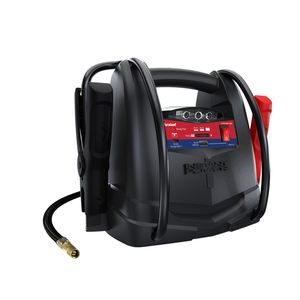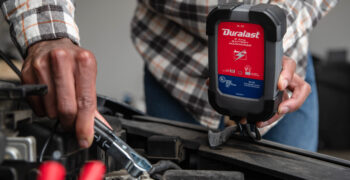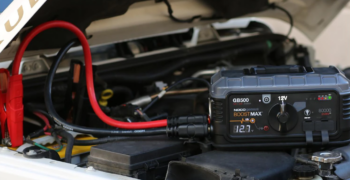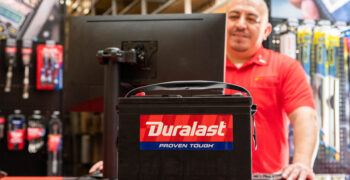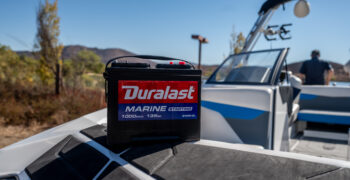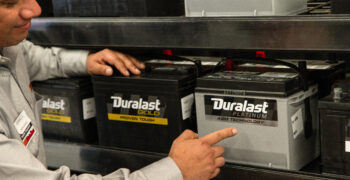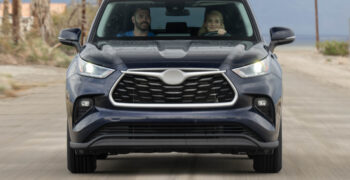Battery Boosters and Chargers Guide
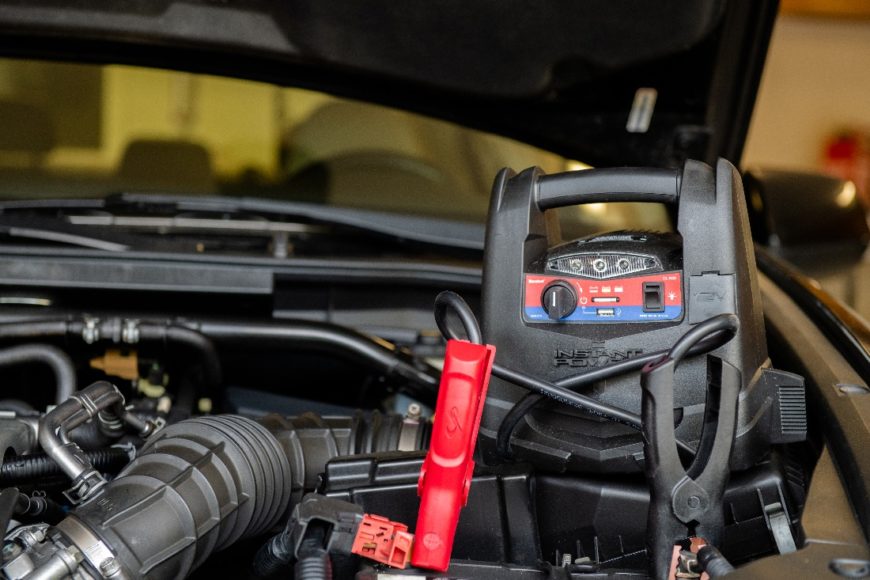
Battery chargers, maintainers, and boosters all perform slightly different functions, but all of them make fantastic gifts for holidays, or any season. Below, we break down the advantages and features of each:
Understanding the Types of Battery Chargers and Their Uses
When it comes to charging your car battery, understanding the differences between trickle charging, standard charging, and boosting is essential to keeping your vehicle’s battery in good condition. Each type of charging serves a specific purpose and can be used in different scenarios.
- Trickle charging isIdeal for maintaining a battery over a long period, trickle charging slowly adds power to keep the battery fully charged without overcharging it. This is perfect for vehicles that are stored for extended periods or not driven frequently.
- Standard charging is used for regular charging when the battery is low but not completely dead. Standard chargers provide a consistent, moderate flow of current and are best for routine maintenance or when you have a few hours to restore a partially drained battery.
- When your battery is completely dead and you need immediate power, a boost charger (also known as a jump starter) delivers a quick, high-amp charge to get the car started quickly. However, it’s not intended for long-term charging or battery maintenance.
| Type | Charging Time | Use Cases | Amp Range |
| Trickle Charging | Slow, over several hours to days | Maintaining battery charge over long periods | Low (0.5 to 2 amps) |
| Standard Charging | Moderate, 4 to 12 hours | Routine battery charging, partially drained battery | Medium (5 to 15 amps) |
| Boost Charging | Fast, within minutes | Quick starts for completely dead batteries | High (40 to 200+ amps) |
Suggested AutoZone Products
Battery Chargers vs. Maintainers vs. Jump Starters
1. Battery Chargers
Battery chargers have come a long way from the old days of hooking up the clamps, plugging it in, and attempting to look at an old, analog gauge to understand whether or not the battery is charged. Today, battery chargers all use digital technology to sense charge, detect problems with bad batteries, reversed cables, and provide a safe, effective charge to the battery. On top of that, they let you know once the charge is complete, taking away the guesswork of the old days. An example of a charger using these features is the Duralast DL-75D, available in AutoZone stores.
When shopping for a battery charger, it’s important to understand several of the other functions that chargers can provide. Most chargers on the market provide 3 charging functions – a low amp, or trickle charge (which is generally 1 to 2 amps), a standard charge (generally 6 to 10 amps), and an engine starter, which is essentially a boost of 75 to 100 amps. Several other chargers also have a feature of a “maintain charge”. Let’s go through what each of these various charging cycles actually mean.
Low Amp/Trickle Charge: A trickle charge often is the most effective way of charging a battery. It’s very slow, steady, and often takes 1-2 days to properly charge the battery. It does so by providing a very low amperage. Trickle charging is what is also used in Battery Maintainers, which we will talk about their use and importance later.
Standard Charge: A standard charge allows you to charge a battery – in most cases – in 3-5 hours, sometimes sooner. Every battery, based on it’s use and age, responds differently to charging, but most people use a standard charge because they need use out of the battery as soon as possible.
Boost or Engine Starting: The Engine Starting Feature of a battery charger is designed to supply a strong current of 75-100 amps to help start a vehicle if the battery is charged enough to turn the engine over, but not enough to turn it with the speed needed to start the engine. This supplied boost generally only lasts 30-60 seconds before the charger shuts off the current. It’s important to note that this feature is different than that of a separate Battery Booster (discussed below), which supplies a much higher amperage boost and can start a car with a completely dead battery.
2. Battery Maintainers
One of the big killers of batteries is a series of constant discharges and recharges. A battery can only take so many of these before it simply loses its ability to take and maintain a charge. Many times, items that suffer from this are vehicles that go a long time in between use including:
-Seasonal cars
-RVs
-ATVs
-Lawn mowers
-Boats
Because of this, battery maintainers are a fantastic item to solve this problem.
A battery maintainer is essentially a very small version of a battery charger that serves one purpose – supply a very low-amperage trickle charge to the battery only when it needs it, and in that sense, keep it “maintained” at the proper voltage at all times. Maintainers are generally the size of the palm of your hand, and provide two types of ways to connect to a battery. You can use standard “alligator” clamps like all chargers use, or you can go with a permanent solution that allows you to wire a pigtail connector right into your battery cables. This way, when you want to hook the maintainer up, you simply plug the connector in, plug the maintainer into the wall, and you are ready to go.
Maintainers are growing in popularity as customers realize that replacing a $100 battery every year, or 2 years on multiple pieces of equipment is far worse than buying a $30 to $50 maintainer to keep all your batteries in top shape when not being used. Many maintainers have multiple circuits, so you can maintain multiple batteries at once (think of boats that may contain 2-3 batteries), or, buy a maintainer for every piece of equipment you have that uses a battery. One such maintainer is the Duralast DL-2D.
3. Battery Boosters
Battery Boosters, or Booster-packs are essentially a portable car battery. They provide high amperage (800-1200 amps) power through connector clamps, and can start a vehicle with or without a battery. Most standard jump packs are about a cubic foot in size, have a carry handle, and many can be rather heavy as they are housing a heavy duty battery. An example of this is the Duralast DL-1200AC, which is a Jump-starter and an emergency air compressor all in one. These boosters are a great addition to any garage or shop, making it much easier than the, “honey, can you pull the car around to the truck and get the jumper cables!” approach to starting something with a dead battery.
Over the past few years, Lithium Ion Boosters have risen rapidly in popularity. They are small in size, lightweight, and provide a ton of starting power, while at the same time, providing this in a small package that can easily be stowed in a Car, Truck, or Boat for emergency use. We run one of these Lithium Ion boosters, the Duralast DL-800L through the paces to show just how powerful it really is.
It’s important to note that starting a vehicle with a very-dead battery is not a best-practice and should be left to emergencies only. A modern-day alternator is not designed to completely charge a dead battery that could not start a car – it’s designed to provide power to a car that is already started, and maintain the battery’s constant charge, which is much easier than charging a battery that’s dead. It will, and can, but can be super taxing to an alternator, and many times, lead to failure. This is why many times, customers who come in for a battery replacement who have repeatedly jump-started the car over weeks and weeks suddenly find that their alternator is now not working either. When ever possible, always charge a battery properly first – if you have time.
Comparing Lithium-Ion vs. Standard Boosters: Which is Right for You?
When choosing a battery booster, it’s important to understand the differences between lithium-ion and standard lead-acid models, as each has distinct advantages depending on your needs.
Lithium-Ion boosters are more compact, lightweight, and portable, making them ideal for everyday drivers who need an emergency boost without taking up much space. Lithium-ion boosters also hold their charge longer and can often start vehicles multiple times on a single charge, making them perfect for travel or for those who may need a quick jump-start on the go.
Standard lead-acid boosters are typically bulkier and heavier, but they offer a more powerful boost for larger vehicles or equipment with higher energy needs, like trucks or RVs. They are well-suited for professional use in garages or situations where more consistent, high-power output is needed.
Lithium-ion boosters are perfect for keeping in your car for emergencies due to their compact size and ability to stay charged over long periods. Because they hold a charge longer, lithium-ion boosters are reliable in harsh weather conditions or for road trips where quick, multiple starts may be needed. Many lithium-ion models come with additional features like USB charging ports, flashlights, and air compressors, making them versatile for more than just jump-starting. Overall, they tend to be a better choice.
Tips for Maintaining Your Booster
To ensure long-term reliability, charge it regularly, approximately every three to six months. Keep the booster in a cool, dry place to avoid battery degradation from extreme temperatures or moisture exposure. Regularly check the cables and clamps for wear or corrosion, and clean them as needed to ensure a strong connection.
It’s important to note that starting a vehicle with a very-dead battery is not a best-practice and should be left to emergencies only. A modern-day alternator is not designed to completely charge a dead battery that could not start a car – it’s designed to provide power to a car that is already started, and maintain the battery’s constant charge, which is much easier than charging a battery that’s dead. It will, and can, but can be super taxing to an alternator, and many times, lead to failure. This is why many times, customers who come in for a battery replacement who have repeatedly jump-started the car over weeks and weeks suddenly find that their alternator is now not working either. Whenever possible, always charge a battery properly first – if you have time.
FAQs
1. What is the difference between a battery charger and a battery maintainer?
A battery charger restores a depleted battery to full power, while a battery maintainer keeps a battery at optimal charge over time without overcharging.
2. How long does it take to charge a car battery with a trickle charger?
It can take anywhere from 24 to 48 hours to fully charge a car battery with a trickle charger, depending on the battery’s capacity and the charger’s output.
3. Can you use a battery maintainer for multiple batteries?
Yes, some battery maintainers are designed to charge multiple batteries at once, especially multi-bank models.
4. What’s the difference between a standard battery booster and a lithium-ion booster?
A standard battery booster is typically bulkier and more powerful, while a lithium-ion booster is compact, lightweight, and holds a charge longer.
5. Can jump-starting a dead battery damage the alternator?
Jump-starting a dead battery can potentially damage the alternator if the battery is completely discharged or if the alternator is overworked trying to recharge it.


